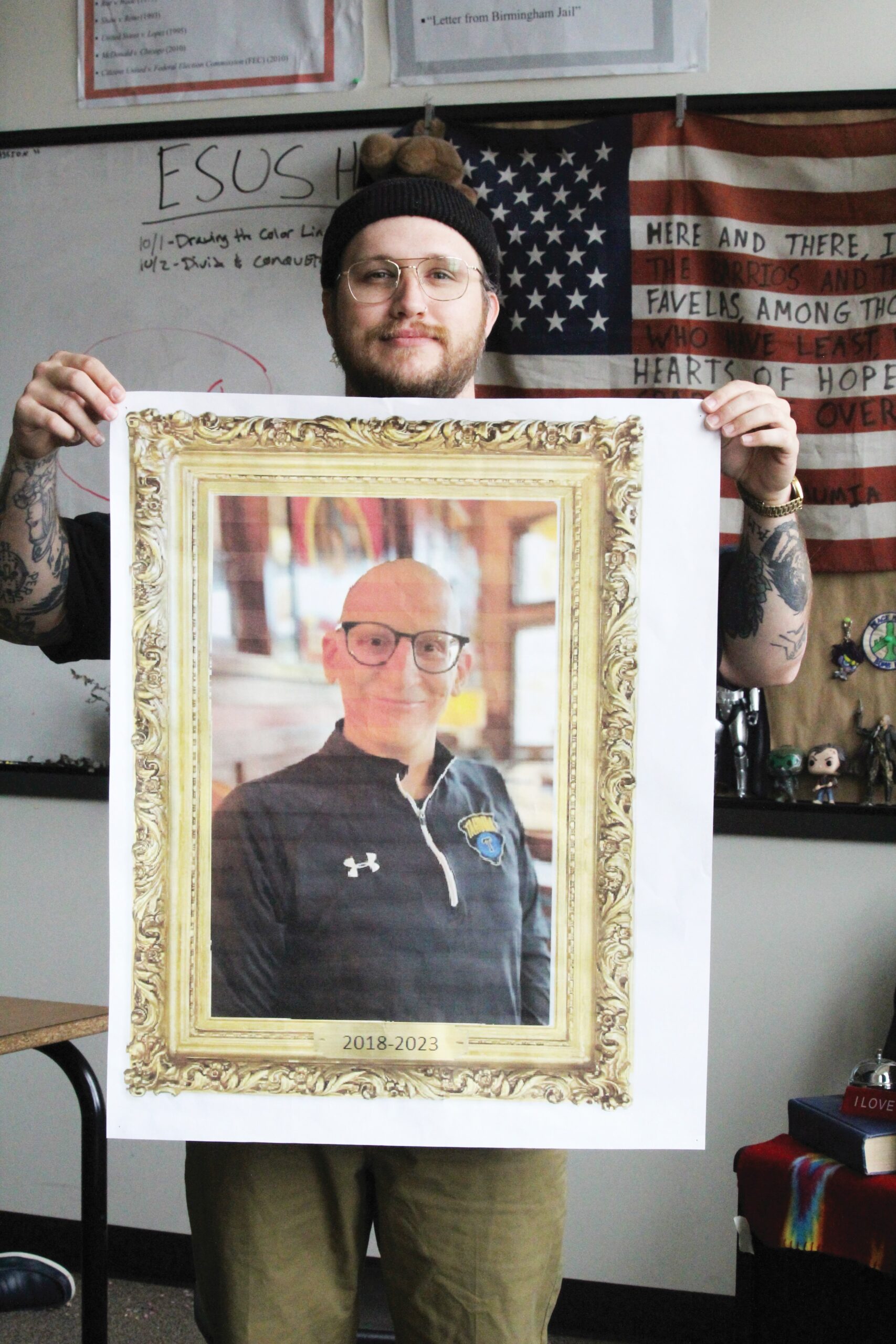There’s no doubt that climate change is affecting us today. Hurricanes are destroying coastal cities. California wildfires are razing through at least million acres. Increases in temperature are melting polar ice caps. Scientists say these changes will be irreversible if drastic steps aren’t taken soon. People in Seattle are also experiencing the realities of climate change. Cindy Jatul, a biotechnology teacher at Roosevelt, recalls, “Anybody who is paying attention to their environment sees things happening that they didn’t see before. Orcas are starving. The salmon populations are in decline.” Junior Joseph Lacktrup, a member of Shirts Across America, remembered having to rebuild homes destroyed by Hurricane Katrina. Because of flooding, “lots of houses were completely gone…They had to be taken down since they were so damaged.”
Recognizing that future generations are in jeopardy, twenty-one young individuals have stood up against the executive branch of the US government, including the Obama and Trump administration, to take action against climate change. This historic case, known as Youth v US government, first garnered national attention in August 2016 when US District Court Judge Ann Aiken denied motions to dismiss the case. The young adults, represented by climatologist James Hansen, are suing the government for violating their right to “life, liberty, and property.” They argue the US government has known the issues of climate change for years and has failed to take action.
Several cases related to climate change have been brought before governments preceding this case. The earliest successful lawsuit was led by Philippine lawyer Antonio Oposa, who represented students from a village trying to protect their forests. His work inspired attorney Julia Olsen to found organization Our Children’s Trust. This organization would later support twenty-one plaintiffs in the Youth v US Government case.
The young adults were chosen to represent based on their direct experiences with climate change such as witnessing desertification, fires, and hurricanes. Initially, this case was filed against President Obama and several other executive positions for their failures to take action against climate change, thereby jeopardizing the lives of future generations. Three fuel companies, such as the American Petroleum Institute, joined the side of defendants in order to have the case dismissed. In a pre-trial hearing in March 2016, US Magistrate Judge Thomas Coffin sided with the plaintiffs and denied those motions of dismissal.
Another victory came for the plaintiffs when Judge Ann Aiken supported Judge Coffin’s decision of the denial to dismiss saying, “Exercising my ‘reasoned judgment,’ I have no doubt that the right to a climate system capable of sustaining human life is fundamental to a free and ordered society.” On November 8, 2018, the Ninth Circuit Court of Appeals granted the Trump administration’s request for a stay or a cessation of legal proceedings. Trial preparations currently continue and Judge Aiken plans to set a trial date once the stay is lifted.
Besides the nationwide case of Youth v US government, there have been other cases on the state level. Here in Washington, thirteen young plaintiffs represented by Attorney Andrea Rodgers sued Governor Jay Inslee for his failure to take action against climate change. Unfortunately, in August of 2018, Judge Michael Scott granted the State of Washington’s appeal to dismiss the case. Attorney Rodgers says, “We have appealed that decision to the Washington State Supreme Court…We are hoping that the Washington Supreme Court will hear the appeal directly given the urgency of the climate change issues involved.”
Certainly, the impact of climate change is relevant today. However, by bringing these cases to court, governments can enact policies to mitigate climate change. Even though the plaintiffs are facing a monumental challenge, a victory in this court case can provide for a better future for all of us.


